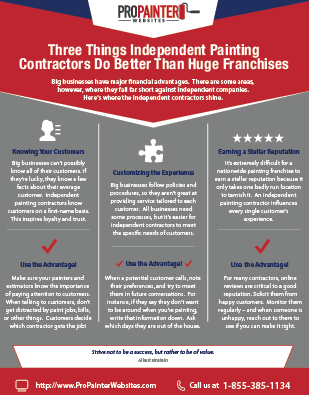Figure Out Exactly How Seasonal Variables Influence Industrial Outside Painting Success And Uncover The Best Times To Make Sure Lasting Results For Your Task
Figure Out Exactly How Seasonal Variables Influence Industrial Outside Painting Success And Uncover The Best Times To Make Sure Lasting Results For Your Task
Blog Article
Write-Up Created By-Carlson Whalen
When you're preparing a business outside paint job, seasonal aspects can make or break your results. You'll want to consider just how temperature and moisture impact paint application and drying times. Choosing the ideal period can ensure your paint sticks properly and lasts longer. Yet which seasons are genuinely the best for this sort of job? Let's check out the key elements that can influence your task's success.
The Effect of Temperature Level on Paint Application
When you're intending a commercial exterior painting task, the temperature level can significantly influence just how well the paint adheres and dries out.
Ideally, you want to repaint when temperature levels range between 50 ° F and 85 ° F. If https://www.architecturaldigest.com/story/painted-ceilings-tips-tricks 's also cool, the paint might not treat properly, leading to issues like peeling or breaking.
On the other side, if it's too hot, the paint can dry out also swiftly, avoiding correct adhesion and causing an irregular coating.
You need to also consider the moment of day; early morning or late afternoon offers cooler temperature levels, which can be more positive.
Always check the producer's recommendations for the particular paint you're using, as they commonly provide support on the perfect temperature level variety for ideal outcomes.
Humidity and Its Impact on Drying Times
Temperature level isn't the only environmental variable that influences your commercial exterior paint job; moisture plays a substantial function as well. High humidity degrees can decrease drying times substantially, affecting the total high quality of your paint job.
When the air is saturated with wetness, the paint takes longer to cure, which can cause problems like poor bond and a greater risk of mold growth. If you're repainting on an especially humid day, be planned for prolonged delay times between layers.
It's crucial to monitor local climate condition and plan appropriately. Ideally, go for aluminum siding painters in between 40% and 70% for ideal drying out.
Keeping these factors in mind ensures your job remains on track and delivers an enduring surface.
Best Seasons for Commercial Exterior Painting Projects
What's the most effective season for your industrial exterior paint tasks?
Spring and early fall are normally your best choices. Throughout these periods, temperatures are light, and moisture levels are commonly lower, creating optimal conditions for paint application and drying out.
Avoid summer's intense heat, which can trigger paint to dry too swiftly, causing poor attachment and surface. Similarly, winter months's cold temperature levels can hinder appropriate drying and curing, taking the chance of the longevity of your paint job.
Aim for days with temperatures between 50 ° F and 85 ° F for ideal results. Remember to check the local weather forecast for rainfall, as wet problems can wreck your task.
Planning around these factors ensures your paint job runs efficiently and lasts much longer.
Conclusion
In conclusion, preparing your business outside painting jobs around seasonal factors to consider can make a significant distinction in the result. By scheduling job throughout the suitable temperature levels and humidity levels, you'll guarantee better bond and drying times. Remember to watch on local weather report and pick the correct time of year-- springtime and early loss are your best options. Taking these steps will aid you attain a durable and expert surface that lasts.
